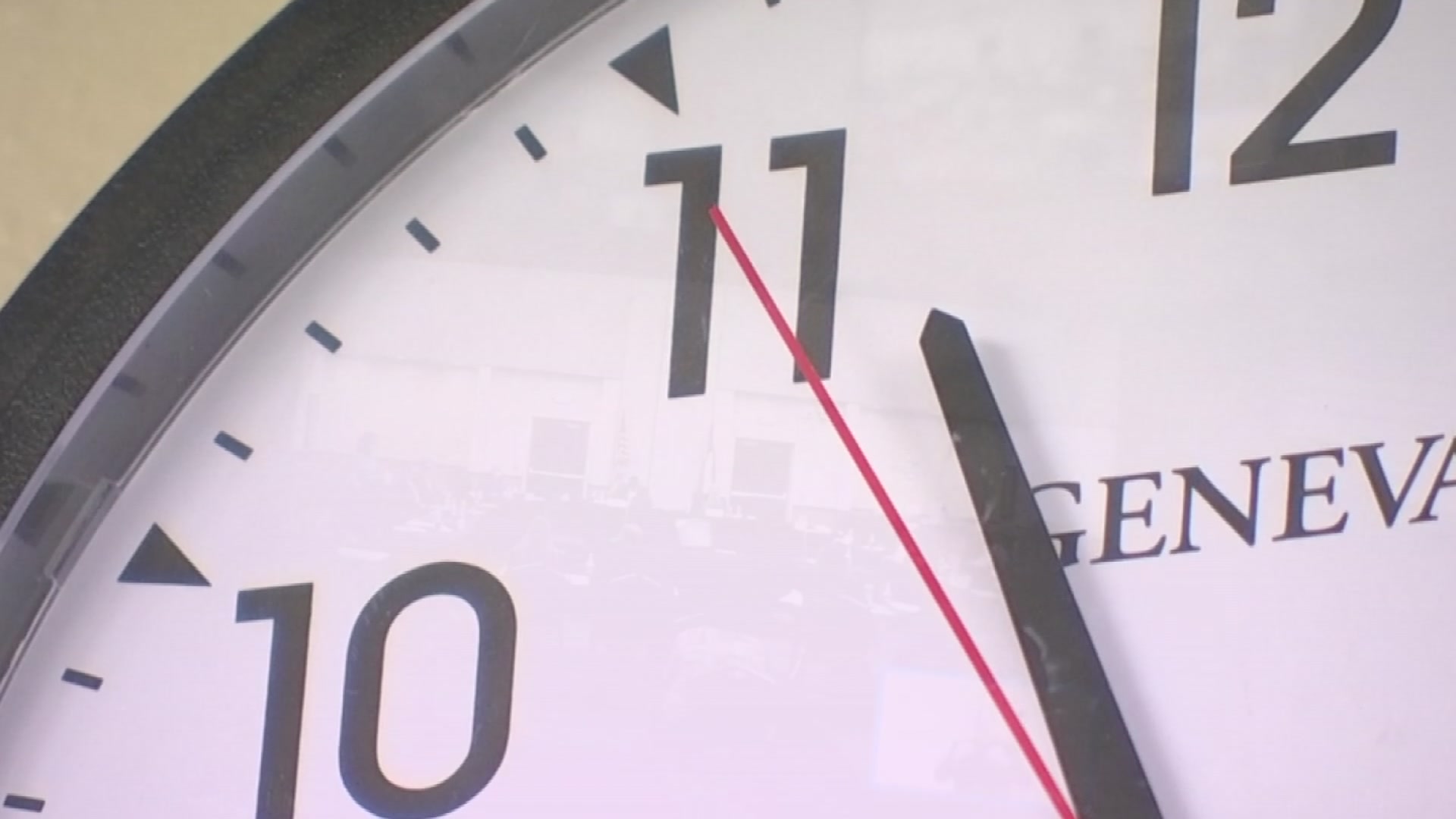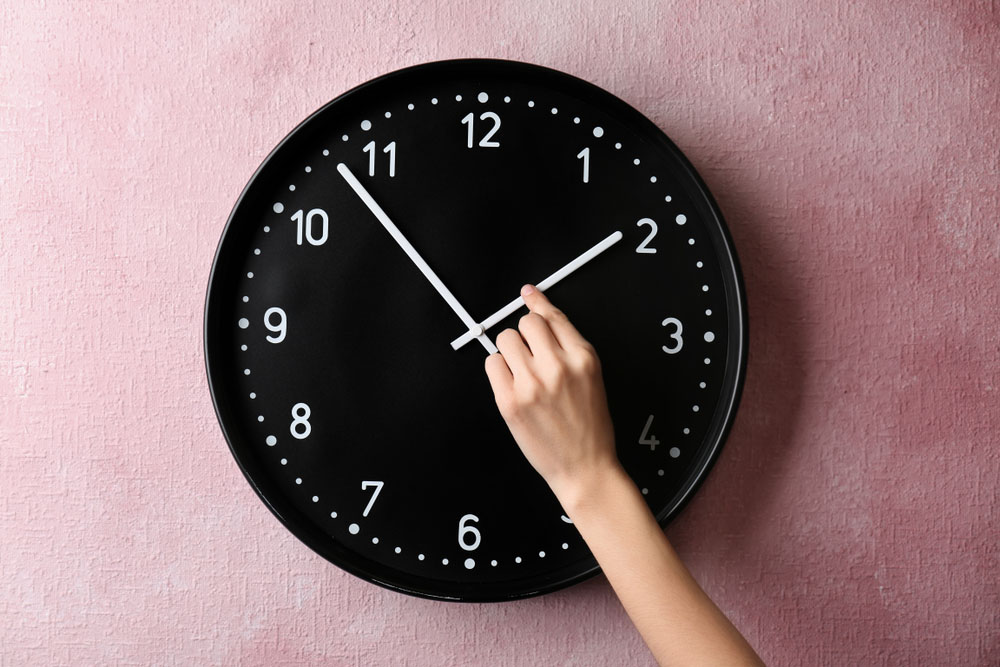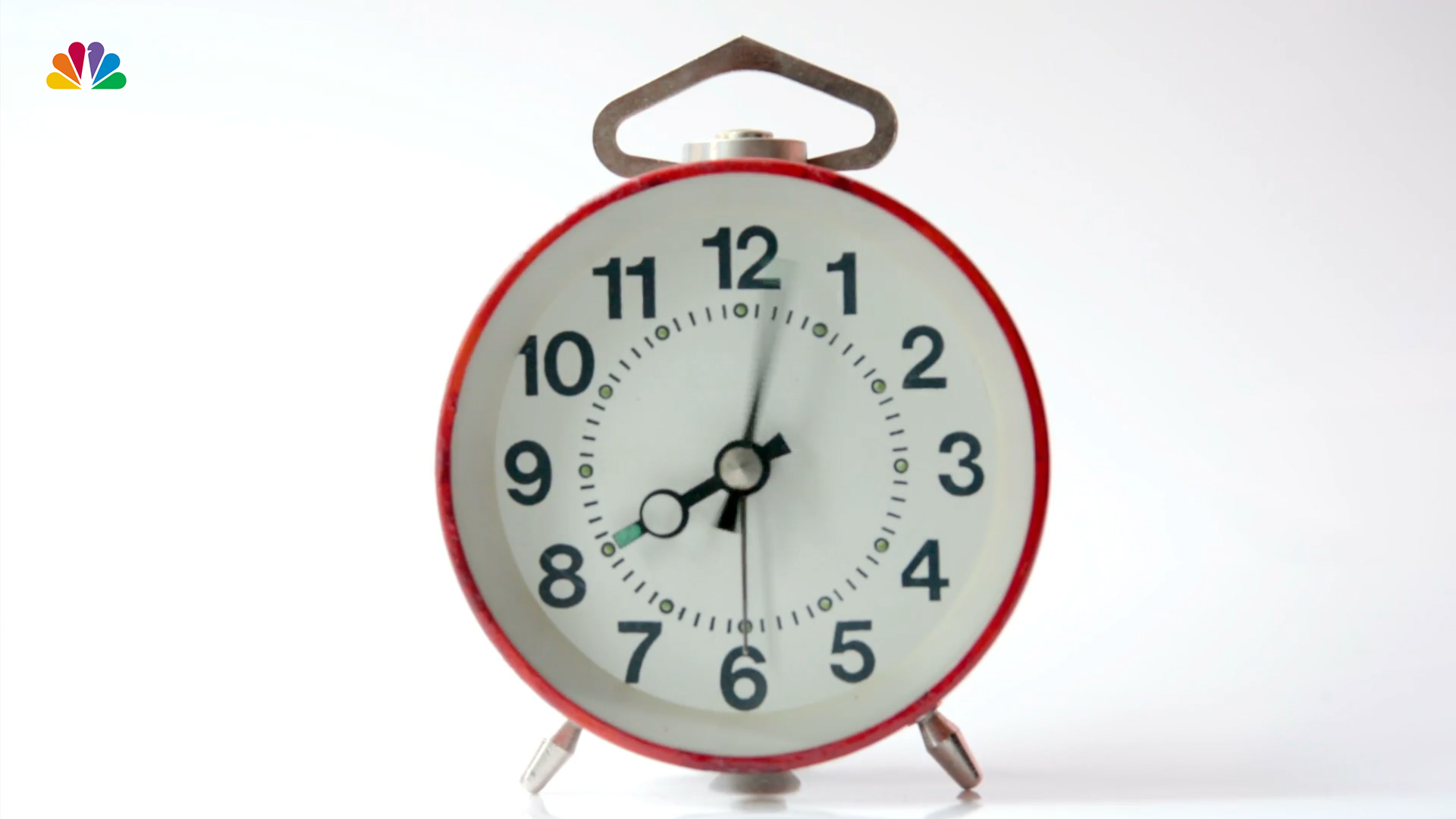It's almost time to "fall back" and change your clocks for daylight saving time 2022, but when exactly will the clocks change and what's happening with the push to end the practice entirely?
As it stands, clocks are set to shift in less than two weeks, but the future of the annual time change remains unclear.
Here's a breakdown of how daylight saving time works:
When is Daylight Saving Time?
Well, first, as a reminder, it's called daylight saving time and not daylight "savings" time.
Daylight saving time in Illinois will end at 2 a.m. on Nov. 6 this year.
It typically begins in March and ends in November in what is often referred to as "spring forward" and "fall back."
In 2022, daylight saving time began on March 13, more than a full week before the official start of spring. On that date, Illinoisans set their clocks one hour ahead.
In the United States, daylight saving time lasts for a total of 34 weeks, running from early-to-mid March to the beginning of November in states that observe it.
Under the conditions of the Energy Policy Act of 2005, daylight saving time starts on the second Sunday in March and ends on the first Sunday in November.
Feeling out of the loop? We'll catch you up on the Chicago news you need to know. Sign up for the weekly Chicago Catch-Up newsletter.
But it wasn't always that way.
Clocks used to spring ahead on the first Sunday in April and remained that way until the final Sunday in October, but a change was put in place in part to allow children to trick-or-treat in more daylight.
Is Daylight Saving Time Ending Permanently?
Earlier this year, the senate unanimously passed legislation known as the Sunshine Protection Act, which would make daylight saving time permanent and effectively eliminate the seasonal changing of the clocks. But the measure still needs to pass the House and be signed by President Joe Biden before it is fully approved.
And according to a July article from The Hill, the bill has hit a "brick wall" in the House.
“We have so many other priorities, but it doesn’t mean because it’s not a priority that we’re not trying to work on it. We are,” Rep. Frank Pallone said, later adding, “If we can accomplish anything, it wouldn’t be until the fall.”
There's still time for more discussion, however.
According to the text of the bill, the new time wouldn’t go into full effect until 2023, with clocks not rolling back after springing ahead for daylight saving time in March of next year.
After that March 2023 spring forward, no more time changes would take place in most of the United States.
The bipartisan bill would ensure Americans would no longer have to change their clocks twice a year. The move would essentially eliminate standard time, which is what many states switch to during winter months.
According to Reuters, at least 30 states have introduced legislation to end the practice of changing times each year, and Pallone cited a study that suggested 71% of Americans are in favor of ending the time change each year.
Supporters of the bill, including co-sponsor Sen. Marco Rubio, said that giving children an additional hour of sunlight after school will allow for safer trips home, more time spent outdoors and other health benefits. He also argued that there would be economic benefits to such a change.
But some experts say permanent standard time might be more beneficial.
How Would a Permanent Change Impact Illinois?
Illinois residents are used to the sun going down just after 4 p.m. in the month of December, but that would of course change with permanent daylight saving time, with the earliest sunset of the year occurring on Dec. 8, 2023 at 5:21 p.m.
Twilight would allow for a bit of residual daylight to stick around until just before 6 p.m.
The real change would occur at sunrise. With the time shifted forward by an hour, sunrise would not occur until after 8 a.m. for a good chunk of the winter, meaning that morning commutes for students and workers would be a bit darker.
In fact, sunrise wouldn’t occur until after 8 a.m. for a span of nearly two months, from Dec. 4 to Feb. 3.
Since daylight saving time is already in effect during the summer, the earliest sunrise of the year (June 13) and the latest sunset of the year (June 24) will remain unaffected.
*Note: All times listed here are accurate for the winter of 2023 and 2024, the first season that the new times would be in effect.
What is Standard Time?
According to the website Time and Date, standard time is the local time in a country or region when daylight saving time is not in use.
"More than 60% of the countries in the world use standard time all year," the site says. "The remaining countries use DST during the summer months, generally setting clocks forward one hour from standard time."
According to the AASM, it's standard time that more closely matches our body's internal clock.
"The daily cycle of natural light and darkness is the most powerful timing cue to synchronize our body’s internal clock," the Illinois-based organization says. "When we receive more light in the morning and darkness in the evening, our bodies and nature are better aligned, making it easier to wake up for our daily activities and easier to fall asleep at night. Daylight saving time disrupts our internal clock, leading to sleep loss and poor sleep quality, which in turn lead to negative health consequences."
Which is Better? Here's What Sleep Experts Say
Regardless of whether or not daylight saving time is made permanent or standard time takes over, Dr. Kathy Sexton-Radek, a consultant for the American Academy of Sleep Medicine's Public Safety Committee and professor of psychology with a special interest in sleep medicine at Elmhurst College, said the changing of clocks can have negative effects on the body.
The shift can "skew or put off-center the normal systems that trigger structures within our mind, within our brain, that tell us through hormone cues and brain chemistry when it's time to be awake and when it's time to be asleep," she told NBC Chicago earlier this year.
Such shifts can cause mood changes, fatigue, concentration issues, and more, Sexton-Radek said.
"Light is the most powerful timing cue for the human body clock,” Erin Flynn-Evans, who has a doctorate in health and medical science and is director of the NASA Ames Research Center Fatigue Countermeasures Laboratory, said in a statement. “Shifting to permanent daylight saving time in the winter would result in more darkness in the morning and more light in the evening, leading to misalignment between the body’s daily rhythm and the timing of routine social obligations, like work or school. That has the potential to make it harder for most people to fall asleep at night, disrupting sleep quality and leading to sleep loss, which can negatively impact health and safety.”
While the legislation on the table is currently to make daylight saving time permanent, the AASM says it's permanent standard time that should be adopted instead, with one reason being to ensure safety for morning commutes.
"For morning commuters and children heading off to school, dark mornings caused by permanent daylight saving time pose numerous safety concerns," the AASM says. "This would be especially problematic during the winter months when days grow increasingly shorter."
"More darkness during early morning commutes may also contribute to an increased risk of traffic fatalities, according to studies," the organization goes on to say.
Sleep experts also argue that permanent daylight saving time would "disproportionately" affect people living in the northern part of the U.S.
"Some parts of Montana, North Dakota and Michigan would not see sunrise until after 9:30 a.m. during the winter months," the AASM said, if the country adopted permanent daylight saving time.
"More populous cities would be impacted by darker mornings as well – with permanent daylight saving time, sunrise wouldn’t occur until 8:20 a.m. in New York City in January. In Los Angeles, sunrise in January would be at almost 8 a.m., and in Minneapolis, sunrise would be at nearly 9 a.m."
Sleep experts at the organization go on to say that seasonal time changes overall are unfavorable to health. According to the AASM, the changes have been linked to an increase in stroke, hospital admissions and cardiovascular events.
"One study found a reduction in the rate of cardiovascular events during standard time in particular, suggesting that the chronic effects of daylight saving time may lead to a higher risk of adverse health problems when compared with standard time," it says.
According to the Department of Transportation, daylight saving time has a number of benefits. The DOT's website highlights the following:
- It saves energy. During Daylight Saving Time, the sun sets one hour later in the evenings, so the need to use electricity for household lighting and appliances is reduced. People tend to spend more time outside in the evenings during Daylight Saving Time, which reduces the need to use electricity in the home. Also, because the sunrise is very early in the morning during the summer months, most people will awake after the sun has already risen, which means they turn on fewer lights in their homes.
- It saves lives and prevents traffic injuries. During Daylight Saving Time, more people travel to and from school and work and complete errands during the daylight.
- It reduces crime. During Daylight Saving Time, more people are out conducting their affairs during the daylight rather than at night, when more crime occurs.
How Did Daylight Saving Time Start and Why Do We Change Clocks?
Some people like to credit Benjamin Franklin as the inventor of daylight saving time when he wrote in a 1784 essay about saving candles and saying, "Early to bed, early to rise makes a man healthy, wealthy and wise." But that was meant more as satire than a serious consideration.
Germany was the first to adopt daylight saving time on May 1, 1916, during World War I as a way to conserve fuel. The rest of Europe followed soon after.
The United States didn't adopt daylight saving time until March 19, 1918. It was unpopular and abolished after World War I.
On Feb. 9 ,1942, Franklin Roosevelt instituted a year-round daylight saving time, which he called "war time." This lasted until Sept. 30, 1945.
Daylight saving time didn't become standard in the US until the passage of the Uniform Time Act of 1966, which mandated standard time across the country within established time zones. It stated that clocks would advance one hour at 2 a.m. on the last Sunday in April and turn back one hour at 2 a.m. on the last Sunday in October.
States could still exempt themselves from daylight saving time, as long as the entire state did so. In the 1970s, due to the 1973 oil embargo, Congress enacted a trial period of year-round daylight saving time from January 1974 to April 1975 in order to conserve energy.
Do Any States Not Observe Daylight Saving Time?
Only two states don't observe daylight saving time, Arizona and Hawaii.




